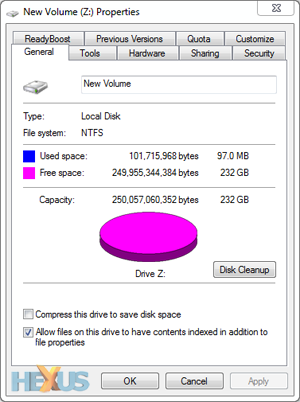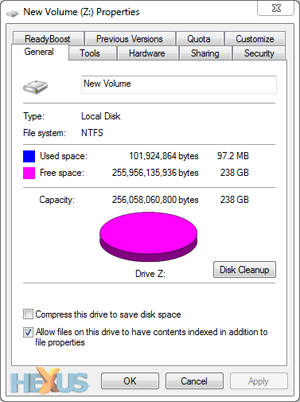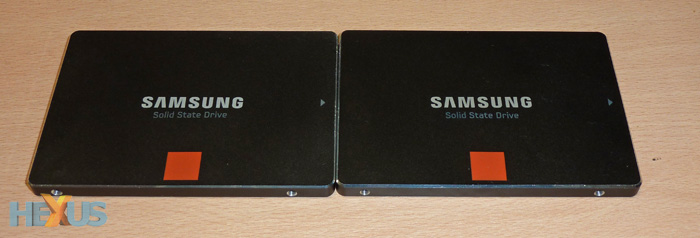A bit of TLC
Samsung launched a broadside at SSD competitors when it came to market with an all-new controller in the 840 Pro drive. Powered by an ARM-based MDX chip and sticking its nose up at all the SandForce-driven drives, our review has shown the 512GB model to be rather speedy in practically all drive-thrashin' benchmarks.
The Korean giant understands that it has a premium drive on the market and prices it accordingly. The 256GB model retails at £185, which translates to a 30 per cent surcharge over the cheapest SF-2281 SSDs.
But Samsung also knows that it needs to retain hold of the mainstream market, especially after the success of the well-reviewed 830 Series SSD. What's needed, then, is a natural successor to the 830, both in terms of performance and price. Samsung 840 Series, please step forward.
Samsung produces three drives in the 840 Series line-up: 120GB, 250GB and 500GB. For the interests of mass-market comparison, we've listed the two mid-capacity SSDs from the 840 and 840 Pro families.
Samsung SSD 840 (PRO) Series specification |
||||
|---|---|---|---|---|
| Model | 840 (250GB) |
840 Pro (256GB) |
||
| Dimensions (L x W x H) | 100mm x 69.85mm x 6.8mm |
100mm x 69.85mm x 7mm |
||
| Interface | SATA 6Gbps (backward compatible with SATA 3Gbps and SATA 1.5Gbps) |
|||
| Form Factor | 2.5in |
|||
| Controller | Samsung 3-core MDX |
|||
| NAND Flash Memory | 2xnm Samsung Toggle NAND TLC |
2xnm Samsung Toggle NAND MLC |
||
| DRAM Cache Memory | 512MB DDR2 |
|||
| Performance | Sequential Read | 530 MB/s |
540 MB/s |
|
| Sequential Write | 250 MB/s |
520 MB/s |
||
| 4KB Random Read (QD32) | 96,000 IOPS |
100,000 IOPS |
||
| 4KB Random Write (QD32) | 62,000 IOPS |
90,000 IOPS |
||
| 4KB Random Read (QD1) | 7,900 IOPS |
9,900 IOPS |
||
| 4KB Random Write (QD1) | 29,000 IOPS |
31,000 IOPS |
||
| TRIM Support | Yes (Requires OS Support) |
|||
| Garbage Collection | Yes |
|||
| S.M.A.R.T | Yes |
|||
| Encryption | AES 256-bit Full Disk Encryption (FDE) |
|||
| Weight | 54g |
62.5g |
||
| Reliability | MTBF: 1.5 million hours |
|||
| Power Consumption | Idle: 0.046W (Typical) Average: 0.071W (Typical) |
Idle: 0.054W (Typical) Average: 0.069W (Typical) |
||
| Temperature | Non-Operating: -55ºC to 95ºC Operating: 0ºC to 70ºC |
Non-Operating: -55ºC to 95ºC Operating: 0ºC to 60ºC |
||
| Humidity | 5% to 95%, non-condensing |
|||
| Shock | 1500G & 0.5ms (half-sine) |
|||
| Management Software | Samsung SSD Magician |
|||
| Warranty | 3 years limited |
5 years limited |
||
| Retail price (basic kit) | £140 |
£185 |
||
The vast majority of an SSD's cost is in the NAND flash chips that make up the drive's storage capacity; the controller is relatively inexpensive, all things considered. With the express aim of reducing the cost of the 840 Series so that it can price-compete with a glut of SandForce drives, Samsung knows it must use cheaper NAND flash - which it manufacturers itself - and it achieves this by harnessing TLC-based memory instead of commonly-used MLC.
SLC vs. MLC vs. TLC
NAND flash is generally available in three flavours: single-level cell (SLC), multi-level cell (MLC) and triple-level cell (TLC). Though largely the same from an architecture point of view, the key difference is in the number of bits contained per memory cell, with SLC carrying one, MLC two, and TLC three. The total number of bits define a drive's capacity. Simplifying it somewhat and assuming we're talking about a fixed capacity, MLC-based NAND will take up half the die size of enterprise-grade SLC memory while TLC will take up one-third, purely down to housing more bits per cell. Putting it another way, TLC takes up around 30 per cent less space than MLC.
Reducing die size but maintaining capacity has obvious cost-saving benefits with respect to NAND production. TLC chips have fewer transistors and are therefore smaller and cheaper than same-capacity MLC chips by dint of that extra bit per cell. This all makes sense so far, we're sure you'll agree, but there has to be a downside to TLC, because why wouldn't all SSD-makers choose it over larger, more-expensive MLC?
And yes, there are at least two important downsides to the use of TLC NAND. The first is with endurance, with TLC having program-erase (P/E) longevity of around 1,000 cycles compared with MLC's 3,000 cycles or so. The fewer times you can erase a memory cell, the shorter its lifespan, but don't get too carried away with this 1,000-cycle number. Assuming that the figure is correct and the SSD's wear-levelling algorithm evenly distributes program-erase functions, a half-full 250GB drive's chips should last over 10 years if as much as 30GB of data is written every single day. Perhaps with an eye on this, do be aware that Samsung reduces the warranty down from five years to three for the non-Pro models.
Adding a wrinkle into the mix, the number of spare memory cells diminishes as the drive is filled up with data. SSD controllers have no choice but to use the limited spare capacity for wear-levelling for further P/E cycles, which can become problematic when there's, say, only 20GB left. Why? Because the controller needs to keep scrubbing this spare 20GB when data is written and then erased; the rest of the drive's cells are already full and cannot be used for necessary wear-levelling.
Scenarios when there's limited capacity for across-the-drive wear-levelling is where over-provisioning comes in, which sets aside a certain amount of NAND flash for P/E duties. TLC NAND's weaker endurance therefore requires larger over-provisioning, and this helps explains why the 840 Series has lower usable capacity than the 840 Pro, even though both have the same chip capacity.
Writing to cells also takes longer on TLC-based NAND. This fact explains why the 840 is slower at writes than the Pro version. Rather than get bogged down in the minutiae of drive details, the 840 has around the same read speed and significantly lower write speed than its higher-specified brethren. Factor in the overall price delta and the differentiation makes a reasonable amount of sense.
Technical differences aside, Samsung provides the excellent SSD Magician software - which takes the guesswork out of drive migration or firmware updates - behind-the-scenes garbage collection, 256-bit AES full-disk encryption and laudable power-draw characteristics present on the PRO.
And, by golly, they look the same, too, with the 840 on the left and 840 Pro on the right. Presented in an attractive aluminium casing that carries on the theme first shown on the 830 Series, the 7mm-thick drives are well-made. Bear in mind there's no 3.5in adapter in the basic kit that's priced at £140.
The only meaningful visual differentiation between the two is with the sticker on the rear. Inside, both contain a total of 256GB of memory that's split over eight chips. Leading on from the discussion above, 840 Series uses physically smaller chips based on TLC NAND technology.
But you don't care about smaller chips and the vagaries of TLC NAND. You care about benchmark results...













